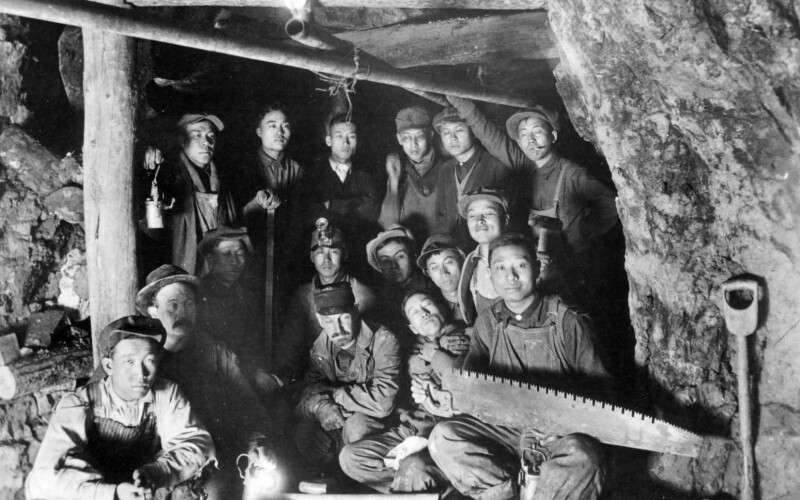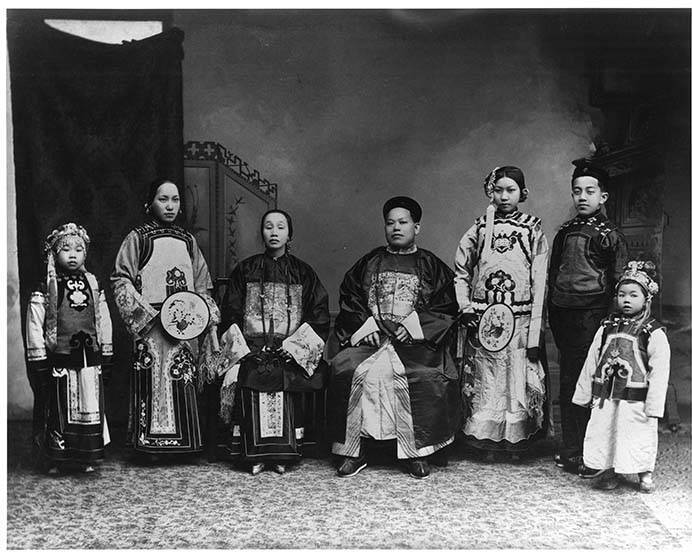San Francisco’s Angel Island was a port nicknamed the “Ellis Island of the West,” and its history is as fascinating as the history of its eastern counterpart.
About 1 million immigrants came through Angel Island between 1910 and 1940, with newcomers arriving from China, Japan, Russia, Australia, and Mexico, just to name a few.
Before Angel Island
The history of Angel Island does not go as far back as that of its sister, Ellis Island, and the reasons for its creation stem from fluctuations over decades in the number and country of origin of immigrants. The west coast of what is now the United States saw relatively little immigration before the 1800s, and immigration levels remained low into the early 1800s. However, events in the mid-1800s in the United States and China made immigration a desirable and potentially lucrative option.
1840s–1850s: Gold Rush

As the middle of the 19th century approached, a wave of immigration began to sweep over California. The initial ripples of this wave started when the west coast became a hot spot for gold in the late 1840s. As more gold was discovered, Chinese immigrants were recruited to labor in the newly opened gold mines.
In addition, China faced internal problems that contributed to mass migration to the United States. In 1850, the Taiping Rebellion took hold, sweeping up much of the country in its wake.
The revolt, also known as the Taiping Civil War or Taiping Revolution, began as an attempt to overthrow the Qing Dynasty and the existing social order in China.
The war spread rapidly, forcing many Chinese civilians to relocate. As civilians moved or were forced further east, it became apparent to many that the new and exciting prospects offered in the United States were worth a journey across the Pacific Ocean.
1860s: Transcontinental Railroad
Chinese immigrants were well sought after, and companies often took advantage of this new workforce by paying lower wages compared to immigrants from other countries. This financial profit led to the mass employment of Chinese laborers for agricultural work and the construction of the Transcontinental Railroad.

1870s: Economic Panic
The post-Civil War economy was in a dire state, which pushed the United States into several economic crises. The Panic of 1873 was the first of these crises, and it played a large part in burgeoning resentment toward Chinese immigrants.
Leading up to the Panic of 1873, deflation and depression had taken hold of the United States economy. These economic problems caused many Americans to lose their jobs, which created fierce competition for jobs with skilled Chinese laborers, who would work for less.
Political leaders and labor leaders alike started to use Chinese immigrants as scapegoats for the financial crisis and other issues. Declining wages and skyrocketing unemployment were suddenly the fault of immigrants. Resentment blossomed, and new policies were adopted to control and curtail immigration.
1880s: The Chinese Exclusion Act
In 1882, the Chinese Exclusion Act was passed. This act completely banned the immigration of both skilled and unskilled Chinese laborers for 10 years, with a particular focus on Chinese laborers employed in the mining industry. It also placed new requirements on Chinese individuals who had already moved to the United States.
In spite of this legislation, not all Chinese immigrants were barred from entry. Travelers, merchants, students, ministers, diplomats, and children of United States citizens were still allowed entry. Chinese immigrants wishing to enter the United States had to have a certificate from the Chinese government.
This act marked the first time in the United States that an entire immigrant group was barred based on their race, but it wouldn’t be the last.

Building the Angel Island Immigration Station
The Chinese Exclusion Act required officials to inspect all Chinese immigrants arriving in San Francisco, California, before they could be allowed on land. The entry process was time consuming, and people had to wait on boats for days before being allowed to disembark. The harbor was becoming congested, and the government needed a solution.
Angel Island was the answer. The island was large and had room to build an immigration station to process the continual flow of people looking to enter California.
The idea of a processing station at Angel Island created public controversy, but despite the protests of Chinese community leaders, the immigration station was completed in January 1910. Access to the island was strictly controlled to prevent people from leaving without permission and to prevent the spread of possible diseases brought by immigrants.
The Immigration Station complex included detention barracks, offices, a mess hall, a heating plant, a hospital, guard towers, recreation yards, laundry facilities, employee cottages, and more.
Why Is Angel Island Called the Ellis Island of the West?
Of the 19 immigration stations operating in the United States in the early 1900s, Angel Island was the main port of entry on the Pacific Coast. While it wasn’t nearly as busy as Ellis Island itself (which processed over 12,000,000 immigrants between the years of 1892 and 1954), it became a major part of the experience of many immigrants arriving on the west coast of the United States. As a result, it earned the title “Ellis Island of the West.”

How Does Angel Island Compare with Ellis Island?
Since Angel Island is often referred to as the "Ellis Island of the West," you may be wondering how similar the 2 islands really are. Both Angel Island and Ellis Island served as immigration stations in the early 1900s. Both were also the main ports of entry on their respective coasts. Otherwise, the islands were very different from each other.
Ellis Island is roughly 27 acres, while Angel Island is much larger, at more than 700 acres. With its small size, Ellis Island wasn’t set up for overnight stays. Most immigrants who passed through the port stayed on the island for only a couple of hours.
Angel Island, on the other hand, was designed for long-term stays. On average, immigrants stayed on Angel Island anywhere from 2 weeks to up to 6 months, with the longest residents staying for at least 2 years. The island was equipped with various buildings to accommodate the people staying there, such as a hospital, barracks, laundry, and a bathhouse.

Angel Island was in operation for only about half as long as Ellis Island, and Ellis Island processed far more immigrants despite its smaller size: over 12 million immigrants passed through Ellis Island while only about 1 million passed through Angel Island. Most immigrants arriving in Ellis Island were European, while most arriving in Angel Island were Asian.
Perhaps the biggest difference between the 2 immigration stations is that many more hopeful immigrants were denied entry at Angel Island. This denial was largely a result of the Chinese Exclusion Act of 1882. Chinese immigrants left poems carved into the walls of the buildings expressing their frustrations. The poems remain intact and provide insight into the personal experiences of some of the immigrants who passed through there.
Where Did Angel Island Immigrants Come From?
People from over 80 countries used Angel Island as their port of entry to the United States. Of about 1 million immigrants who came through the immigration station, most came from Asian countries—approximate numbers from the United States National Parks Service indicate that around 250,000 immigrants came from China, and 150,000 immigrants came from Japan.
What Happened to Angel Island?
The "Ellis Island of the West" was in operation from 1910 to 1940. In 1940, a fire destroyed the main administration building, and the immigration station was moved to the mainland. Today, most of the island is part of California's Angel Island State Park. Visitors can get to the island by ferry and can tour immigration museums as well as hike or camp. The experience is well worth a visit for anyone in the San Francisco Bay area.

Did Your Ancestors Come Through Angel Island?
If your ancestors arrived in the United States on the West Coast, chances are they passed through Angel Island. How much do you know about their journeys? Perhaps they were among the people who lived on Angel Island for months, carving poems into the walls.
Discover details about your ancestors who passed through the "Ellis Island of the West" through immigration records. The small details you learn, including names and dates, can help you piece together the lives they led and help you understand your own history.
Share Your Immigration Story Through In-Home Activities
There are a lot of lessons to learn from our ancestors and their stories. What better way to learn them than with your families? At FamilySearch, we provide a host of free activities that are designed to inspire participants and help them to appreciate the lives of those who came before them.
Feel What They Felt: Can you imagine the feeling of being on a steamship for weeks, likely sleeping in a cramped space with many other complete strangers—all to start a new life in the relatively new United States? This activity emphasizes understanding the feelings that your ancestors may have felt on their journey. By doing this activity, you can build a deeper bond and maybe even find the courage for a big change in yourself.
Related Articles
At FamilySearch, we care about connecting you with your family, and we provide fun discovery experiences and family history services for free. Why? Because we cherish families and believe that connecting generations can improve our lives now and forever. We are a nonprofit organization sponsored by The Church of Jesus Christ of Latter-day Saints. To learn more about our beliefs, click here.




